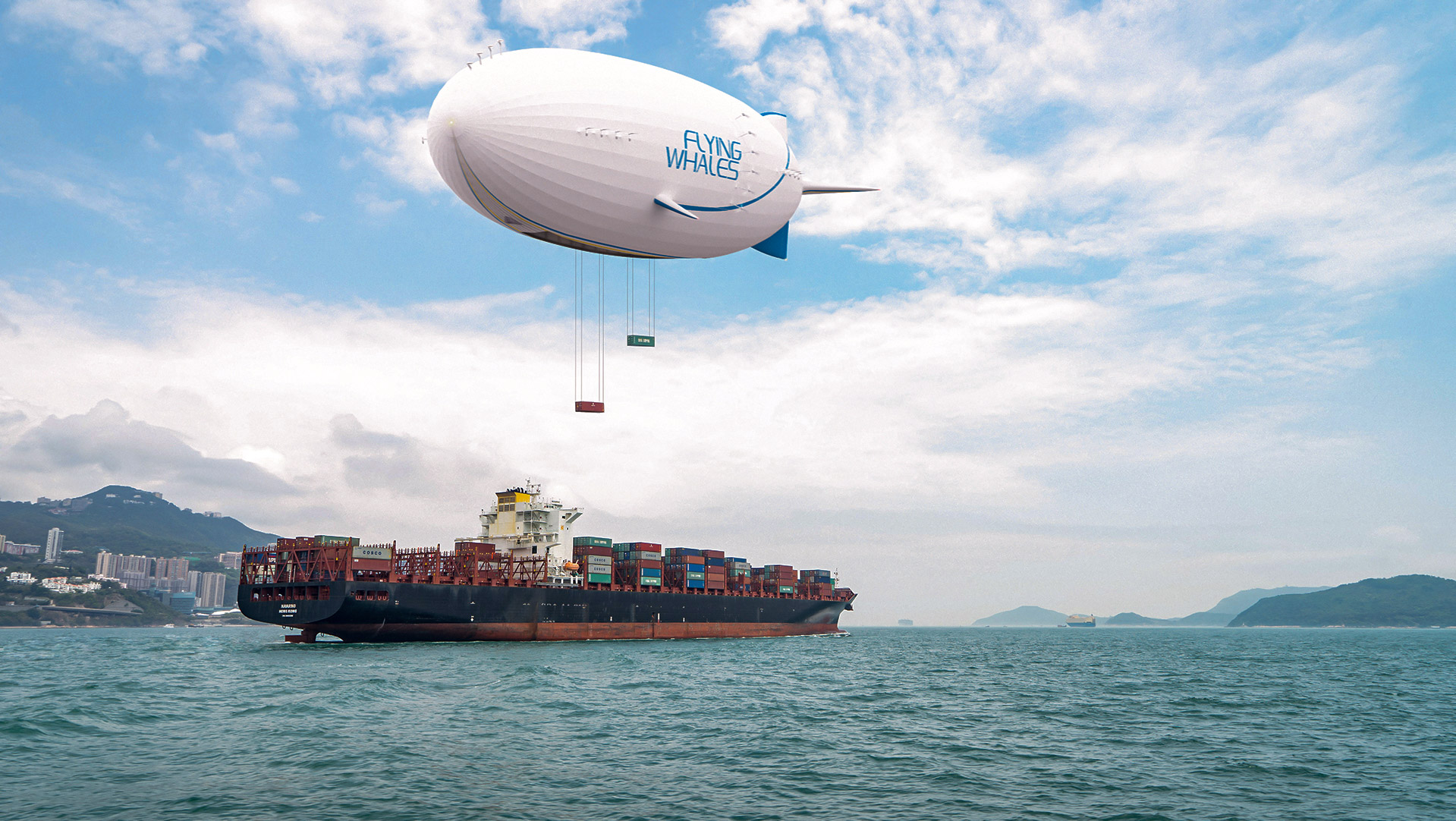Welcome to the big blimp boom
Meet the startups that want to build futuristic blimps, airships, and hot-air balloons.

Floating is the new flying, at least according to a handful of companies focused on building futuristic blimps, airships, and hot-air balloons.
Lighter-than-air vehicles (or LTAs) depend on the same basic physics that creates bubbles in water. They’re filled with extremely light gas, like helium, which allows them to achieve lift and hover in the air without burning fuel. They’ve never been particularly popular: they’re big and comparatively slow, and they have faced safety concerns ever since the 1937 Hindenburg disaster, which left 36 people dead.
Still, some companies say modern LTAs can be extremely safe. They argue that these aircraft can play a critical role in cutting down on carbon emissions associated with transportation, especially for moving people and things that don’t need to travel very quickly.
In May, the somewhat secretive Sergey Brin–backed company LTA Research, which has been working on airships since 2016, announced that it’s ready to unveil its first, the Pathfinder 1. The French company Flying Whales is developing an airship that’s lifted by helium and can haul up to 60 tons of cargo. The vehicle is controlled with a hybrid-electric propulsion system, though the company plans to eventually transition to hydrogen fuel cells, which will make its aircraft fully electric. Flying Whales has already partnered with aerospace companies to determine whether it could eventuallytransport rocket parts.
A startup called Sceye is building a helium-powered vehicle that can hover in the stratosphere, high enough to rival the capabilities of some satellites in low Earth orbit. Because Sceye’s LTA can stay in the same place for an extended period, the company wants to use it to beam broadband directly down to smartphones in less-connected regions. Sceye says its systems could be used to track greenhouse-gas emissions and monitor natural disasters; the company is also working with New Mexico and the Environmental Protection Agency to monitor air quality.
“The best way to think of us is as a geostationary platform superimposed on the surface of the planet,” says Sceye’s CEO, Mikkel Vestergaard. Any additional power that the vehicle might need is supplied by solar panels during the day and a lithium-sulfur battery during the night.
Some of these next-generation LTAs might even be used for human transportation. Hybrid Air Vehicles, a British company that’s raised more than £100 million ($125 million), plans to use its Airlander 10 ship to transport people on less-served and rural routes. Powered by internal combustion, the Hybrid Air vehicle also takes advantage of tech found in lighter-than-air vehicles by using helium to create buoyancy. Though its top speed is just 130 kilometers per hour, the company says its aircraft can compete with airplanes on shorter routes, in part because of quicker takeoff and landing times. Another fundamental difference is that “you can take off on land from anywhere reasonably flat,” says CEO Tom Grundy. “In particular, areas that are not well served by existing transport.”
These startups will have to overcome long-standing safety concerns, and LTA vehicles may be more difficult to fly in bad weather, says James Flaten, a University of Minnesota professor of aerospace mechanics. Still, most of the vehicles used today use helium, not hydrogen—the flammable gas that brought the Hindenburg down. LTAs can also be designed so even if they did tear, they would leak very slowly, says Grundy.
It’s still early days for the big blimp boom. Though it’s secured some initial contracts, Hybrid Air Vehicles has only built a prototype, and its plans for a new 1,200-worker factory in the United Kingdom are just taking shape—the company eventually wants to build 24 aircraft a year. Sceye says its 13th flight will take place later in 2023.
For now, most LTA technology is still on the ground. On the flip side, though, there’s nowhere to go but up.
Deep Dive
Climate change and energy
The problem with plug-in hybrids? Their drivers.
Plug-in hybrids are often sold as a transition to EVs, but new data from Europe shows we’re still underestimating the emissions they produce.
Harvard has halted its long-planned atmospheric geoengineering experiment
The decision follows years of controversy and the departure of one of the program’s key researchers.
Why hydrogen is losing the race to power cleaner cars
Batteries are dominating zero-emissions vehicles, and the fuel has better uses elsewhere.
Decarbonizing production of energy is a quick win
Clean technologies, including carbon management platforms, enable the global energy industry to play a crucial role in the transition to net zero.
Stay connected
Get the latest updates from
MIT Technology Review
Discover special offers, top stories, upcoming events, and more.